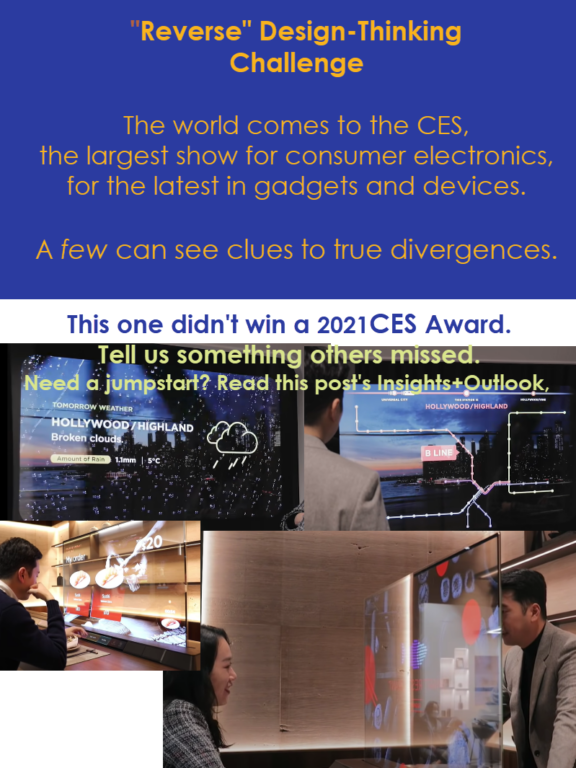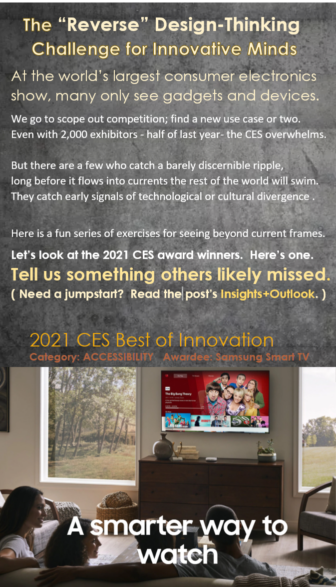Case #02: LG Transparent OLED
Transparent screens for conference tables, allowing full interactions, with semi-transparent work screen areas.
Design-Thinking starts with the user’s needs, creating products/services such as those showcased at the world’s largest event for electronics and digital technology, the CES.
This is a series of fun exercises in stepping back. Let’s discover “wider frames” – the larger context – beyond a situation’s need and intent.
We know every solution has its new costs, frictions, problems – and unintended consequences. In the momentum of execution. we narrow focus to results. Results with the least amount of resources, in the least amount of time. Necessarily, some bandwidth needed for analysis has been traded for speed in execution.
The digital world’s super-connectedness creates systems of systems. Truly disruptive innovations often create political and economic shifts. We create quite a new order of complexity and risks.
Design-thinking is convergent: it seeks solutions. So, how to keep aware of context? We spot the divergences beyond the current frames: what others miss – those barely discernible ripples, quite before they flow into currents then waves that the rest of the world swims.
This, then, is a way of seeing.

Transparent screens for conference tables, allowing full interactions, with semi-transparent work screen areas.

Samsung: “using AI and human-factors design to make the TV the voice-interactive. intuitive command center for managing everything from access to a world of content beyond streaming, to controlling all connected home devices” .
Surely there’s a more meaningful challenge than this?